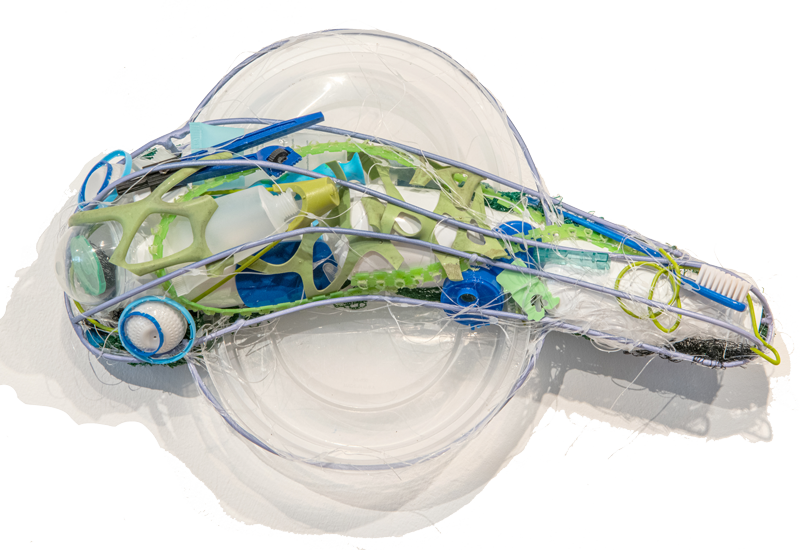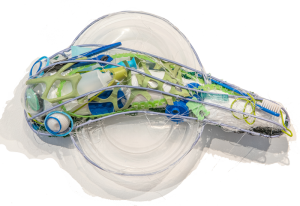
As a conceptual artist and citizen scientist, my work is informed by the study of animal behavior and habitat. Since the late 70’s I have collected and worked with discarded material to consider its intervention and importance in the food web. The studio is a lab where discarded plastics, organic material and papers transform.
Growing up in the Great Lakes rustbelt of the ’50s and ’60s, I was aware at an early age how the language we use to describe the environment establishes our place in the natural world. Our perceptions are as much framed by stories of waste as they are of wonder. Upon moving to NYC in the late ’70s, like many artists, I was fortunate to be a participant in the petri dish of economic decline and urban ecology, and for the past four plus decades a focus on Discard Studies has mobilized my sculpture practice. I have come to believe that although the landscape of ecocide is a sad place, it is also a place of rebirth.

As a conceptual artist and citizen scientist, my work is informed by the study of animal behavior and habitat. Since the late ’70s I have collected and worked with discarded material to consider its intervention and importance in the food web. The studio is a lab where discarded plastics, organic material and papers transform.
Growing up in the Great Lakes rustbelt of the ’50s and ’60s, I was aware at an early age how the language we use to describe the environment establishes our place in the natural world. Our perceptions are as much framed by stories of waste as they are of wonder. Upon moving to NYC in the late ’70s, like many artists, I was fortunate to be a participant in the petri dish of economic decline and urban ecology, and for the past four + decades a focus on Discard Studies has mobilized my sculpture practice. I have come to believe that although the landscape of ecocide is a sad place, it is also a place of rebirth.
©christy rupp 1962–2024 | site by lisa goodlin design